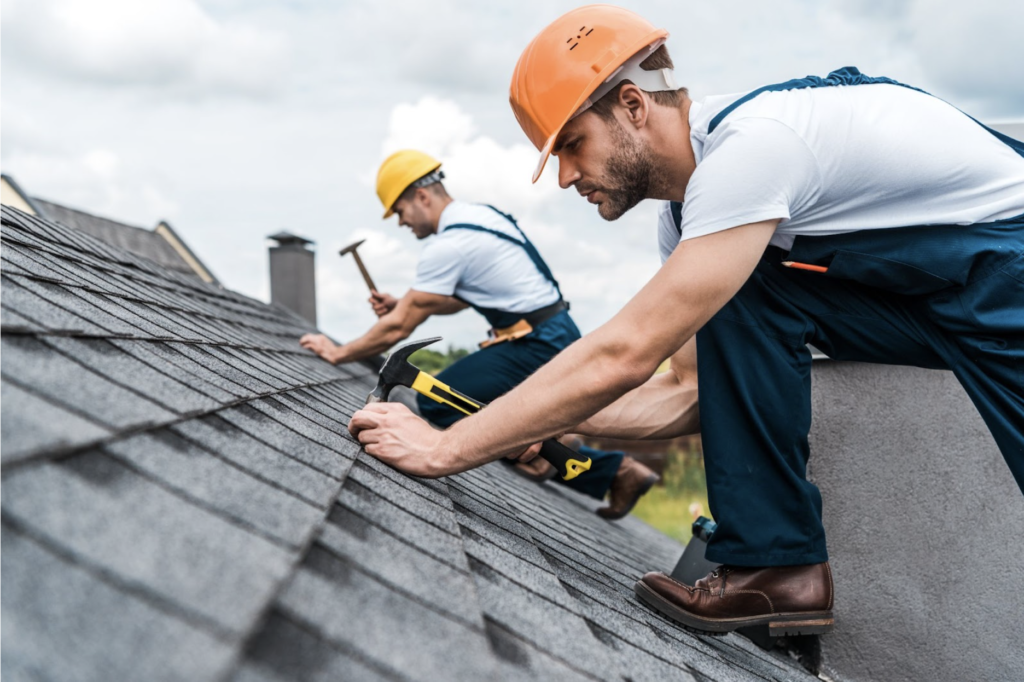A well-installed roof is crucial for protecting your home from the elements and maintaining its structural integrity. Understanding the process of roof installation is essential for homeowners considering a roofing project. In this article, we will delve into the comprehensive process of installing a roof, highlighting key steps and considerations along the way. Whether you’re planning a roof replacement or constructing a new home, learning more about the roof installation process is vital for ensuring a successful and durable roofing system to get link.
- Introduction
A. Importance of a Well-Installed Roof
A properly installed roof provides essential protection against weather elements, contributes to energy efficiency, and enhances the overall aesthetics of a home.
B. Overview of the Roof Installation Process
The roof installation process involves several stages, including pre-installation preparation, actual installation of roofing materials, quality assurance, and post-installation maintenance.
C. Importance of Hiring Professionals
Hiring experienced roofing professionals ensures that the installation process is conducted safely, efficiently, and in compliance with building codes and regulations.
II. Pre-Installation Preparation
A. Roof Inspection and Assessment
Evaluation of Existing Roof Condition
- A thorough inspection of the existing roof identifies any damage, leaks, or structural issues that need to be addressed before installation.
Determining Necessary Repairs or Replacements
- Based on the inspection findings, necessary repairs or replacements are determined to ensure a solid foundation for the new roof.
Assessing Structural Integrity and Support
- The structural integrity of the roof deck and support system is assessed to determine its capacity to withstand the weight of new roofing materials.
B. Material Selection and Procurement
Choosing Suitable Roofing Materials
- Homeowners work with roofing professionals to select roofing materials that best suit their needs, considering factors such as climate, durability, and aesthetic preferences.
Ordering Necessary Supplies and Equipment
- Once the materials are chosen, orders are placed for the required supplies, including roofing shingles, tiles, underlayment, and flashing.
Considering Aesthetics, Durability, and Budget
- Homeowners weigh factors such as the appearance, longevity, and cost of roofing materials to make informed decisions that align with their preferences and budget constraints.
C. Obtaining Permits and Approvals
Researching Local Building Codes and Regulations
- Contractors research local building codes and regulations to ensure compliance with permit requirements and zoning restrictions.
Securing Necessary Permits and Documentation
- The necessary permits and documentation are obtained from local authorities before commencing the roofing project.
Ensuring Compliance with Zoning Requirements
- Compliance with zoning requirements ensures that the roofing project meets all legal and regulatory standards and avoids potential fines or penalties.
III. Roof Installation Process
A. Removal of Old Roofing Materials
Tear-Off of Existing Roof Layers
- Existing roofing materials are removed down to the roof deck to provide a clean surface for the new installation.
Inspection for Damage or Rot
- During the tear-off process, the roof deck is inspected for any signs of damage, rot, or moisture infiltration that may require repairs.
Disposal of Debris in Compliance with Environmental Regulations
- Debris from the tear-off process is collected and disposed of in compliance with environmental regulations to minimize environmental impact.
B. Preparation of Roof Deck
Repairing and Reinforcing Substrate as Needed
- Any damaged or weakened areas of the roof deck are repaired or reinforced to ensure a stable foundation for the new roofing materials.
Installation of Underlayment and Waterproofing Membrane
- A waterproofing membrane and underlayment are installed to provide an additional layer of protection against water infiltration.
Ensuring Proper Ventilation and Insulation
- Proper ventilation and insulation are essential for maintaining attic temperature and moisture levels, prolonging the life of the roofing system and preventing issues such as ice dams and condensation.
C. Installation of Roofing Materials
Application of Shingles, Tiles, or Metal Panels
- The selected roofing materials are installed according to manufacturer specifications, ensuring proper alignment and coverage.
Sealing and Fastening of Roofing Materials
- Roofing materials are securely fastened to the roof deck using appropriate methods, such as nails, screws, or adhesives, to withstand wind uplift and other environmental stresses.
Integration of Flashing, Gutters, and Drainage Systems
- Flashing is installed around roof penetrations and along roof edges to prevent water infiltration, while gutters and drainage systems are integrated to direct water away from the roof and foundation.
IV. Quality Assurance and Finalization
A. Inspection and Quality Control
Thorough Examination of Completed Roof Installation
- A comprehensive inspection is conducted to ensure that the roof installation meets quality standards and adheres to manufacturer specifications.
Checking for Proper Alignment and Fastening
- Roofing professionals verify that all roofing materials are properly aligned, fastened, and sealed to prevent leaks and ensure structural integrity.
Addressing Any Deficiencies or Issues
- Any deficiencies or issues identified during the inspection are promptly addressed to ensure the durability and performance of the roofing system.
B. Final Touches and Cleanup
Trim Work and Finishing Details
- Final trim work and finishing details are completed to enhance the appearance and functionality of the roof, such as installing ridge caps or flashing.
Removal of Construction Debris and Waste
- Construction debris and waste are removed from the site to ensure a clean and safe environment for the homeowners and workers.
Ensuring Site Cleanliness and Safety
- The work site is thoroughly cleaned and inspected for safety hazards to minimize the risk of accidents and injuries.
C. Client Walk-Through and Documentation
Walk-Through with Client to Review Workmanship
- A walk-through is conducted with the client to review the completed workmanship and address any questions or concerns.
Providing Documentation of Warranty and Maintenance Guidelines
- The client is provided with documentation outlining warranty information, maintenance guidelines, and care instructions for the new roof.
Addressing Client Questions and Concerns
- Any questions or concerns raised by the client during the walk-through are addressed promptly to ensure their satisfaction with the completed roofing project.
V. Post-Installation Maintenance and Care
A. Routine Roof Maintenance
Regular Inspection for Damage or Wear
- Homeowners are advised to schedule regular inspections of their roof to identify any signs of damage, wear, or deterioration that may require repairs.
Cleaning Gutters and Drainage Systems
- Keeping gutters and drainage systems clean and free of debris prevents water backup and potential damage to the roof and foundation.
Prompt Repair of Leaks or Damaged Areas
- Any leaks or damaged areas identified during routine inspections should be addressed promptly to prevent further water infiltration and structural damage.
B. Monitoring and Addressing Issues
Monitoring for Signs of Moisture or Mold
- Homeowners should monitor their attic and interior spaces for signs of moisture or mold growth, indicating potential roof leaks or ventilation issues.
Addressing Pest Infestations or Vegetation Growth
- Pest infestations or vegetation growth on the roof should be addressed promptly to prevent damage to roofing materials and potential structural issues.
Performing Seasonal Maintenance Tasks
- Performing seasonal maintenance tasks, such as cleaning debris from the roof and inspecting for ice dams in winter, helps maintain the integrity and performance of the roofing system.
C. Professional Roofing Services
Scheduled Roof Inspections and Maintenance
- Homeowners are encouraged to schedule regular roof inspections and maintenance with professional roofing contractors to ensure the longevity and performance of their roof.
Emergency Repair Services
- In the event of storm damage or other emergencies, homeowners can rely on professional roofing services for prompt repairs to minimize damage and protect their home.
Roof Replacement or Upgrades as Needed
- When the time comes for roof replacement or upgrades, homeowners can consult with roofing professionals to explore their options and make informed decisions based on their needs and budget.
In conclusion, the process of installing a roof is a complex and multifaceted endeavor that requires careful planning, skilled labor, and attention to detail. From pre-installation preparation to post-installation maintenance and care, each step plays a crucial role in ensuring the durability, functionality, and longevity of the roofing system. By understanding the roof installation process and working with experienced professionals, homeowners can confidently invest in a quality roof that protects their home and enhances its value for years to come. Learn more about the roof installation process to make informed decisions and achieve optimal results for your roofing project.



